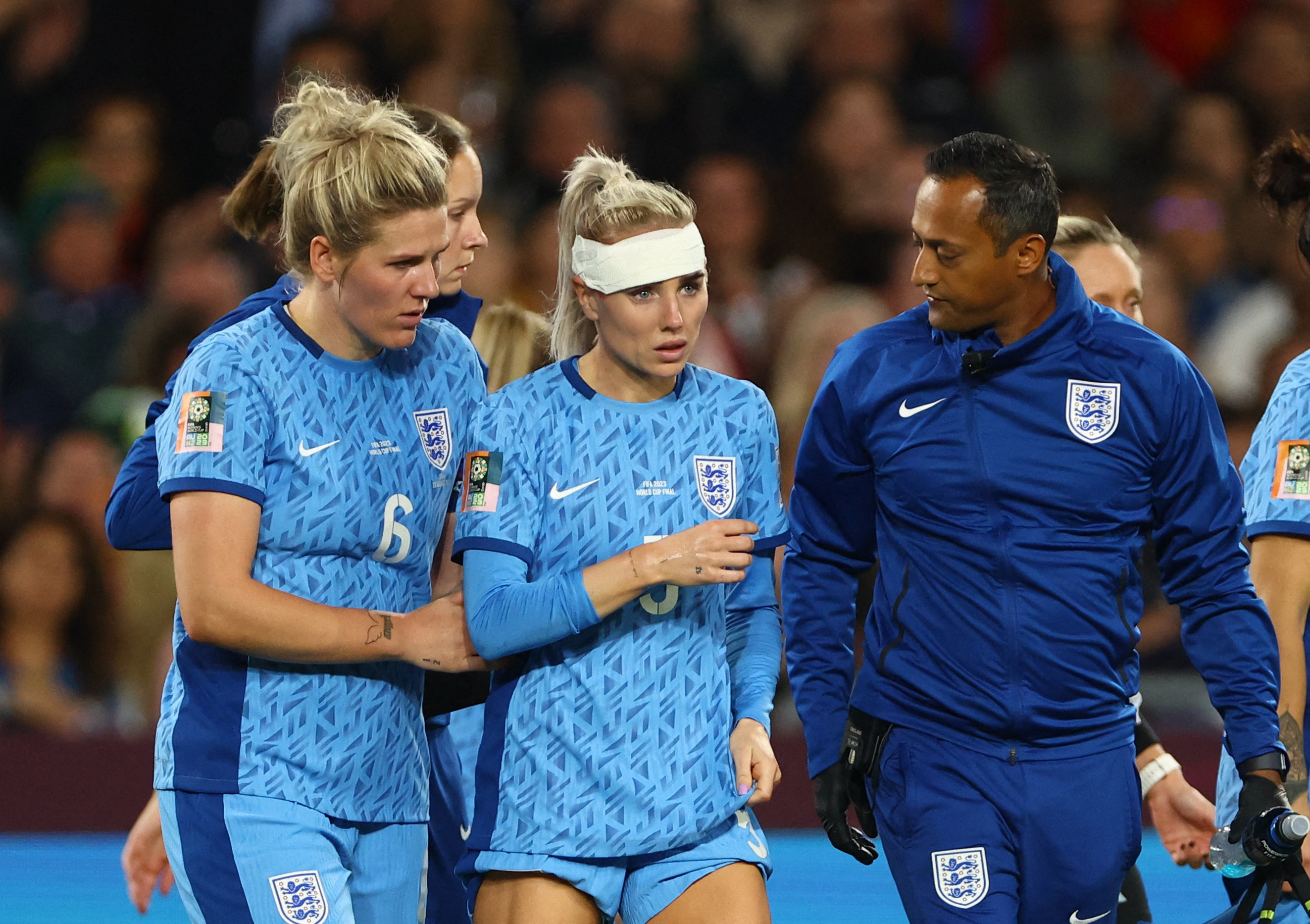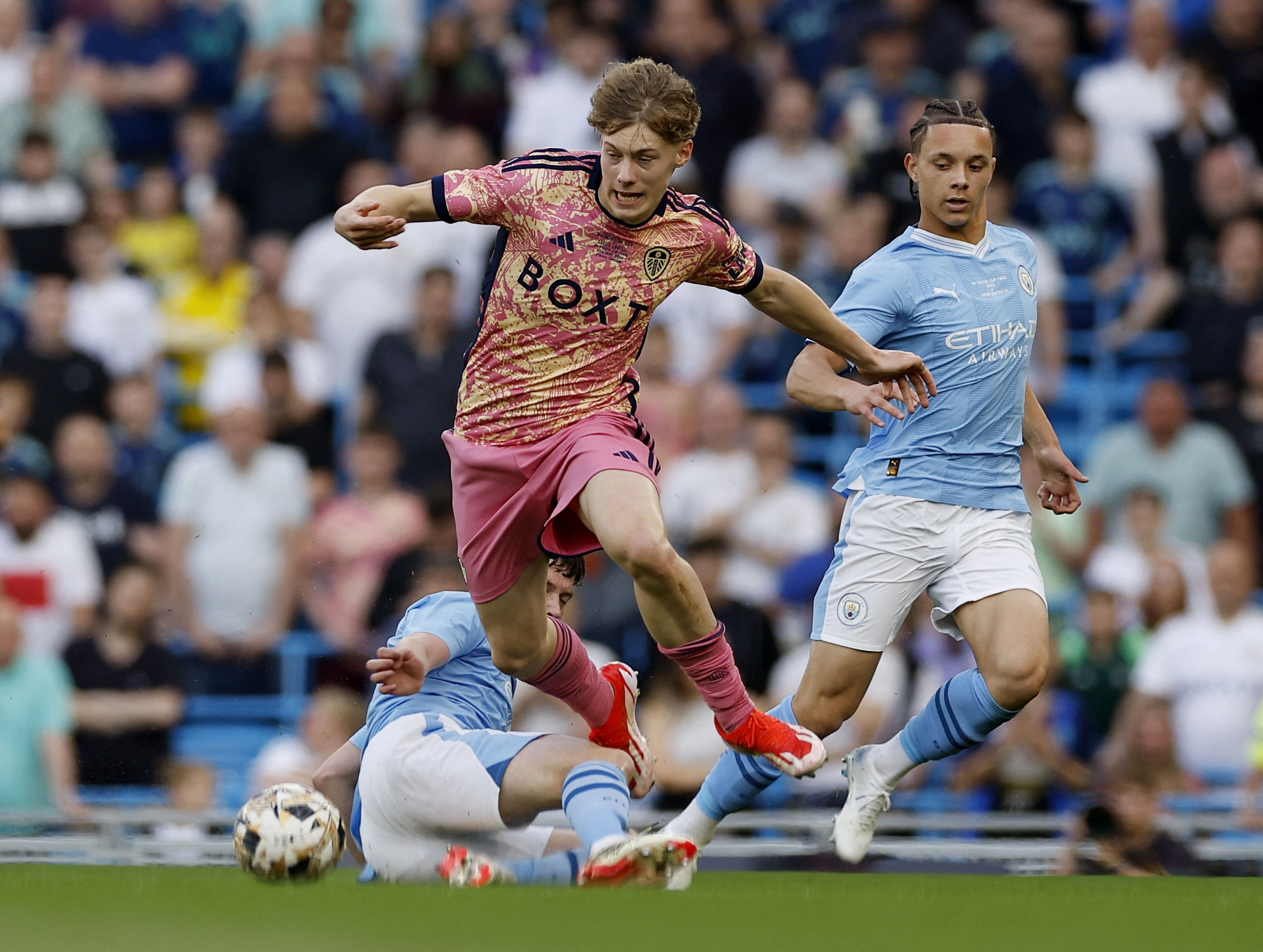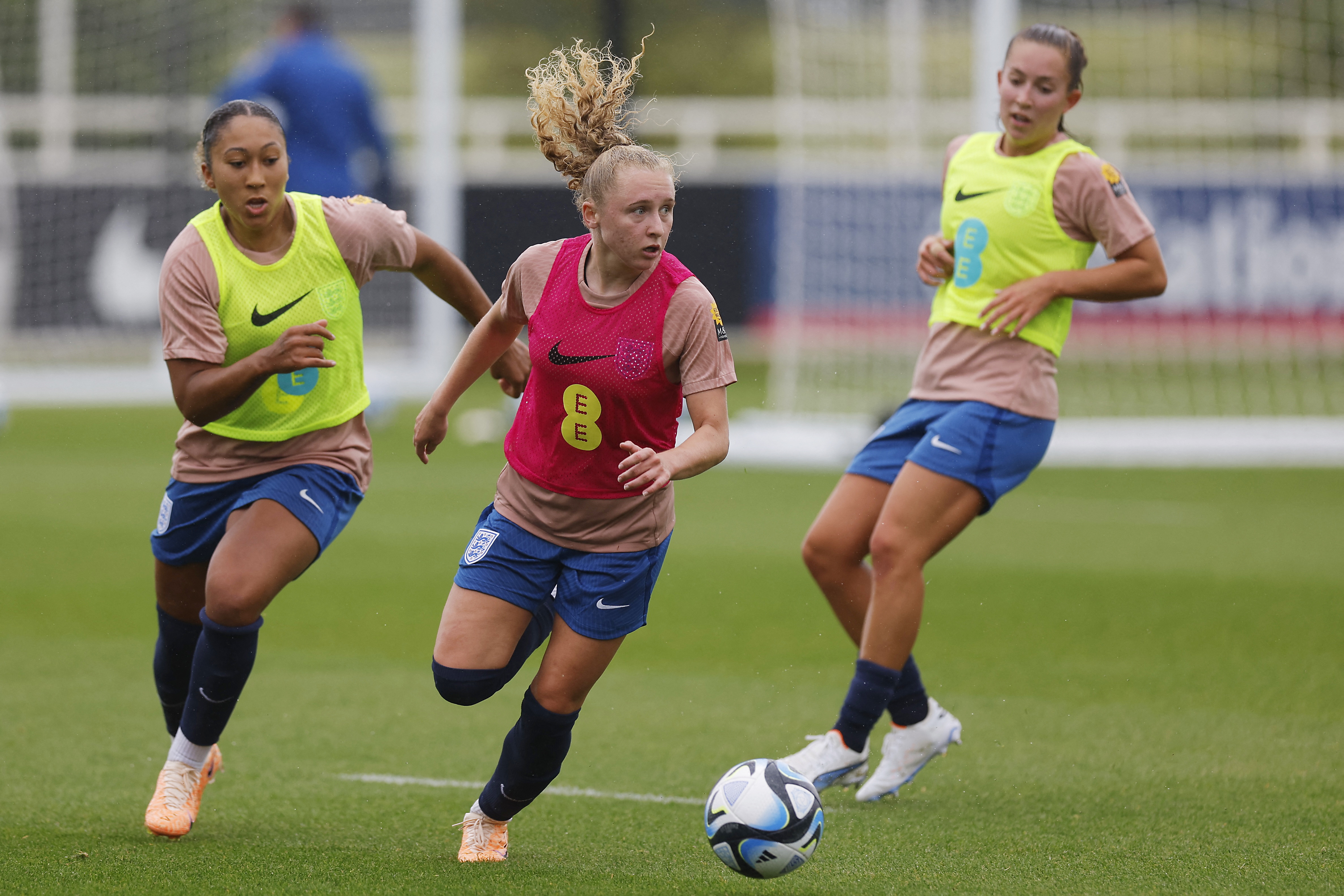You are viewing 1 of your 1 free articles
The Beautiful Game Part 2 - Women's Football Concussion Injuries
A concussion is twice as common in women’s football as in men’s. Samantha Nupen discusses reasons for this, how to prevent this potentially devasting injury, and the physiotherapist’s role in management.
FIFA Women’s World Cup Australia and New Zealand 2023 - England’s Alex Greenwood receives medical attention after sustaining an injury REUTERS/Hannah Mckay
Concussion in football
Most sports-related concussions (SRC) occur due to collisions between players with elbow- or head-to-head contact. Falls also account for many concussions, with the head or body making contact with the ground in a way that transmits a force to the head(1). Furthermore, the link between heading and SRC is less clear.
Female football players are twice as likely to suffer from a concussion, with incidence rates significantly higher while heading. Goalkeepers have the highest incidence(2). Furthermore, women footballers exhibit more severe symptoms and take longer to recover from concussions(3).
What happens to the brain?
Biomechanically
During acceleration and deceleration injuries, the brain moves forwards in the skull. The frontal lobes strike the inside of the skull, causing a contusion (coup injury) and a rebound injury (contra-coup) to the occipital lobe. This results in tensile and shear strain on the axons and compressive strain on the brain tissue. In SRC, there is often a rotational component. The brain rotates on its axis, causing shear forces (see figure 1). There is stretching of blood vessels which may cause a hematoma. This is not visible in standard neuroimaging studies like CT or MRI scans.
Metabolically
Cell communication in the brain is disturbed at the synaptic level. The blow to the head affects the potassium pump, resulting in excessive neurotransmitter release, which interferes with cell communication. Cerebral blood flow slows down due to slowed metabolism in the brain, and it takes time to clear excessive neurotransmitters.
Recognition
Concussion should be suspected when an injury results in a knock to the head or a blow to the body, which transmits a force to the head. Relatively minor knocks are enough. Obvious signs of concussion are loss of consciousness, brief convulsions, and difficulty balancing or walking. However, the signs of concussion are often more subtle(4).
Clinicians use three primary side-line concussion recognition tools to identify when to remove athletes from play.
- The Pocket Concussion Recognition Tool (PCRT) is a compact and user-friendly assessment tool designed to aid in the identification of potential concussions. It provides a simple checklist of symptoms and signs for quick recognition and assessment on the field(5).
- Modified Maddocks Questions assess cognitive function and memory after a head injury. These questions gauge an individual’s orientation, memory recall, and concentration, helping medical professionals comprehensively assess potential concussions. The questions include: Which venue are we at today? Which half is it now? Who scored last in this match? Who did you play last week? Did your team win the last game?
- The Sport Concussion Assessment Tool (SCAT6) is a comprehensive and standardized tool widely used in sports medicine and was updated in 2023. It includes a variety of assessments, such as symptom evaluation, cognitive testing, and balance assessment, providing a holistic approach to recognizing and managing concussions in athletes(6).
The cardinal principle remains for clinicians dealing with sports-related concussions: "If in doubt, sit them out." When facing uncertainty about a player’s concussion status, prioritizing their long-term well-being by removing them from play and conducting a thorough evaluation is paramount to prevent potential exacerbation of injuries.
Once clinicians can assess an athlete in the clinic, computerized neuropsychological tests such as ImPACT or Axon Sports Concussion provide information regarding the cognitive impact of the collision and suspected concussion. Importantly, these tests should accompany a thorough clinical assessment.
Researchers at the University of Rochester School of Medicine and Dentistry in the USA have shown that elevated plasma tau concentration within six hours following an SRC results in a prolonged return to sports. Therefore, the results suggest that tau levels may help inform clinical return to sports decision-making(7).
Male and female differences
Several hypotheses explain increased concussion rates, symptom severity, and prolonged RTP in female football players:
- Reduced neck strength with greater head-to-neck angular acceleration.
- Hormonal differences, particularly during menstruation. For example, elevated progesterone worsens post-concussion symptoms.
- Smaller skull volume and space around the brain reduces the impact dissipation during contact.
- Less access to football through school negatively impacts stage-appropriate training, coaching, falling technique practice, and specific neck and upper body strength development.
- Greater ball-to-head size ratio in women.
- Women are more likely to report their symptoms.
Concussion Prevention in Women Footballers
Protective equipment
External devices like mouthguards and headgear have a protective but not preventive effect on concussion. They can decrease acceleration/linear forces and perhaps prevent a fracture but cannot prevent rotational forces inside the skull. Moreover, athletes may play with a false sense of security, resulting in more dangerous play(8).
Sport regulations
There are calls to ban heading in women’s football below a certain age and then introduce them slowly. There are also calls to ban heading completely for the well-being of all footballers. Although, practically, this may be appear to be a long-shot, awareness is being raised of the risks. As practitioners and researchers gain a better understanding of SRC and the gender-differences, regulators may have to respond accordingly.
Football size
Female players are playing with the same size football as men. Clinicians may advocate for ball size and weight changes to create a balanced ball-to-head size ratio. This would reduce the heading impact and the intrinsic forces athletes need to prevent injury.
Specific training
Improved neck muscle strength is protective against concussion. Isometric neck exercises are not enough. Dynamic and sport-specific exercises focussing on header and fall techniques are essential.
Long-term sequelae
Post-concussive syndrome (PCS)
Ninety percent of athletes recover within 7-14 days(9). The other 10% suffer post-concussive syndrome, a constellation of symptoms including persistent headaches, dizziness, sleep disturbance, fatigue, irritability, mood swings, apathy, and personality changes lasting more than three weeks and up to three months(10). This can affect cognition, learning, memory, and executive function. Women are at greater risk of PCS.
Chronic Traumatic Encephalopathy (CTE)
A few athletes may progress to the most severe version of post-concussive syndrome – Chronic Traumatic Encephalopathy. For years there have been discussions regarding the link between repeated concussions and CTE. There has not been a conclusive link between concussion and CTE in women’s sports until recently. The recent death of a female Aussie Rules footballer and subsequent autopsy confirmed CTE lesions (increased Tau protein and cerebral atrophy) in her brain(11).
Second Impact Syndrome (SIS)
Second impact syndrome (SIS) happens when the brain swells rapidly shortly after a person suffers a second concussion before symptoms from an earlier concussion have subsided. Thankfully, this event is extremely rare but is often fatal within five minutes(12).
Management
The Consensus statement on concussion in sports written after the 6th International Conference on Concussion in Sport lists the 12 R’s of Sports-Related Concussion(13). The conference produced new or revised clinical assessment tools like CRT6, SCAT6 (Child SCAT6), and SCOAT6 (Child SCOAT6), with a focus on athletes and para athletes, their perspectives, medical ethics, athlete retirement, and potential long-term effects of sports-related concussion (SRC) including neurodegenerative disease.
Relative rest and recovery
The consensus statement recommends that strict rest until the complete symptom resolution is not beneficial. Instead, concussed athletes should initiate relative rest immediately. This includes activities of daily living and reduced screen time.This allows the brain to recover and symptoms to clear. Gentle, graduated exercise should begin 24 hours after the concussion.
Patients with PCS who engage in low-level exercise recover faster. The Buffalo concussion treadmill test assesses when patients may resume full activity by measuring the patient’s ability to achieve the target heart rate without experiencing symptoms or early exhaustion. Once patients can achieve age-related maximal heart rate and exercise without symptoms for at least 20 minutes for two to three consecutive days, they have recovered physiologically. For athletes, this may not correlate to RTS but allows the athlete to train aerobically until other post-concussive symptoms resolve(10).
Addressing sleep hygiene
The glymphatic system, the lymphatic system of the brain, only works in non-REM sleep, which is why restoring normal sleep patterns is so important to allow it to clear toxins.
Restoring strength and endurance
Regaining strength and endurance without exacerbating symptoms using therapeutic exercise and monitoring symptoms closely.
Managing dizziness and balance
Clinicians must address continued visual and balance disturbances using the vestibular-ocular motor screening tool (VOMS) to identify the root cause of a patient’s residual post-concussive symptoms. Treatment includes cervical physiotherapy, vision therapy, and vestibular rehabilitation. Vestibular rehabilitation helps resolve balance and dizziness with specific exercises that form part of a home exercise program. Vestibular Ocular Reflex (VOR) exercises coordinate eye and head movement, while Vestibulospinal Reflex (VSR) exercises coordinate head and body movement.
Reducing headaches
Headache is a common residual symptom post-concussion due to the concomitant whiplash associated with concussion(14). Addressing neck and head injury-related factors results in an improvement in activities of daily living(15). Manual therapy includes joint mobilization, myofascial release, trigger point release, neural mobilization, dry needling, posture correction, and exercise.
Returning to normal activity or sport
Clinicians must guide the patient’s return to normal activities without overloading the brain and compromising healing. Gradual exposure is the key(16).
Conclusion
A concussion is more prevalent and more severe in women footballers. It is an injury that could progress to more serious brain injury. Physiotherapists play a valuable role in creating and implementing prevention programs and managing post-concussion symptoms, which allows a timely and safe return to sport.
References
- Br J Sports Med 2004;38:690–696
- Phys Sportsmed. 2022 Feb;50(1):11-19
- J Neuroimaging. 2020 Jul; 30(4): 387–409
- www.sportsconcussion.co.za/
- bjsm.bmj.com/content/bjsports/47/5/267.full.pdf
- bjsm.bmj.com/content/bjsports/47/5/259.full.pdf
- Neurology. 2017 Feb 7; 88(6): 595–602
- Neurosurg Focus. 2016 Apr;40(4): E12
- www.ncbi.nlm.nih.gov/books/NBK534786/
- J Athl Train. 2017 Mar; 52(3): 299–308
Newsletter Sign Up
Subscriber Testimonials
Dr. Alexandra Fandetti-Robin, Back & Body Chiropractic
Elspeth Cowell MSCh DpodM SRCh HCPC reg
William Hunter, Nuffield Health
Newsletter Sign Up
Coaches Testimonials
Dr. Alexandra Fandetti-Robin, Back & Body Chiropractic
Elspeth Cowell MSCh DpodM SRCh HCPC reg
William Hunter, Nuffield Health
Be at the leading edge of sports injury management
Our international team of qualified experts (see above) spend hours poring over scores of technical journals and medical papers that even the most interested professionals don't have time to read.
For 17 years, we've helped hard-working physiotherapists and sports professionals like you, overwhelmed by the vast amount of new research, bring science to their treatment. Sports Injury Bulletin is the ideal resource for practitioners too busy to cull through all the monthly journals to find meaningful and applicable studies.
*includes 3 coaching manuals
Get Inspired
All the latest techniques and approaches
Sports Injury Bulletin brings together a worldwide panel of experts – including physiotherapists, doctors, researchers and sports scientists. Together we deliver everything you need to help your clients avoid – or recover as quickly as possible from – injuries.
We strip away the scientific jargon and deliver you easy-to-follow training exercises, nutrition tips, psychological strategies and recovery programmes and exercises in plain English.











